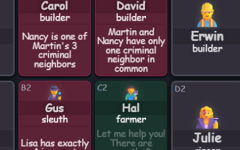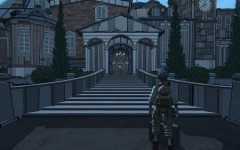Advertisement
Huntsman
Advertisement

In Huntsman, the player is placed into a confined office facility that has been overtaken by a spider. The building is mostly intact, but its function has clearly been disrupted. Lights flicker inconsistently, rooms are partially blocked by debris, and every hallway seems to lead back to the same point. Progress is tied to finding specific materials scattered across the space. Movement is slow by design, forcing the player to plan routes and listen carefully. The spider isn’t always visible, but its presence is constant. Doors may give a few seconds of cover, but no location remains safe for long.
A Single Goal Under Pressure
The game relies on environmental interaction rather than combat. Players are tasked with assembling a solution using a limited number of tools, each one requiring careful retrieval. Flashlight use becomes essential in dim corners where visual cues are hard to read. The spider does not follow a fixed loop, which means memorization is unreliable. Instead, players must adapt to each encounter. Getting caught results in failure, and recovery is not always possible. The level design encourages experimentation, but punishes mistakes. Everything the player needs is available from the start—they just have to survive long enough to find it.
Minimal Design, Focused Execution
Built using Horror Engine, Huntsman is a short-format horror game meant to be completed in about ten minutes. It was designed without controller support, and all primary assets—particularly the spider model and animations—were created specifically for this project. Regular updates have improved movement, lighting, and overall responsiveness, but the experience remains tightly structured. There are no narrative branches or hidden areas. The core idea is singular: one enemy, one setting, one outcome.






















































































































































